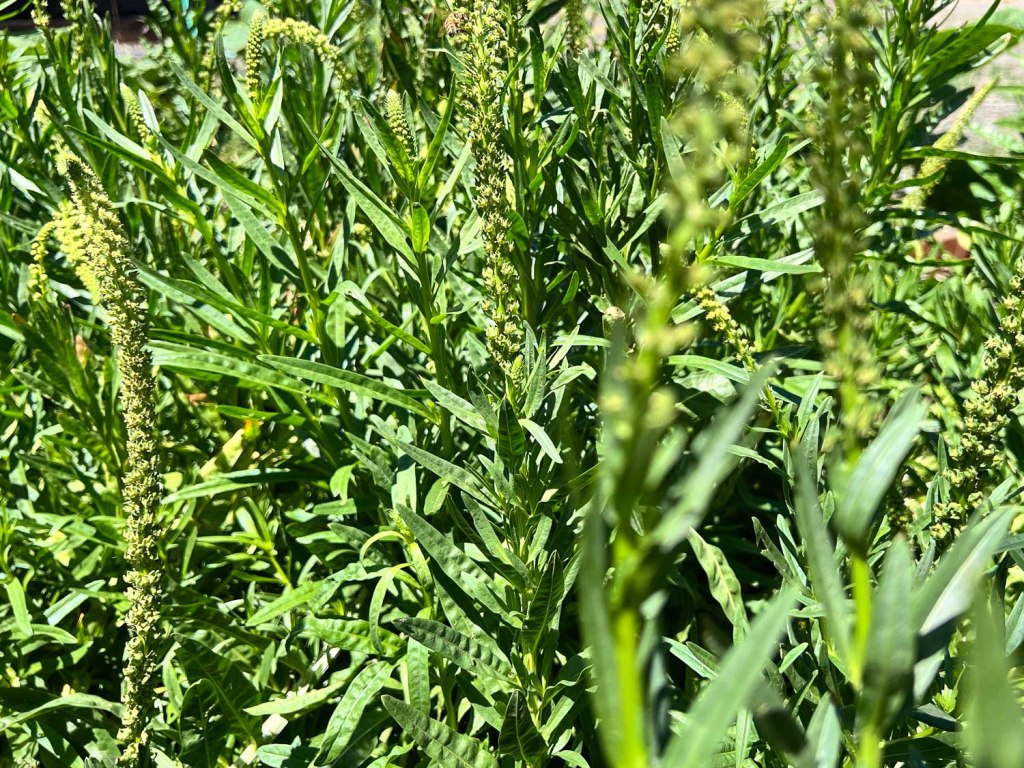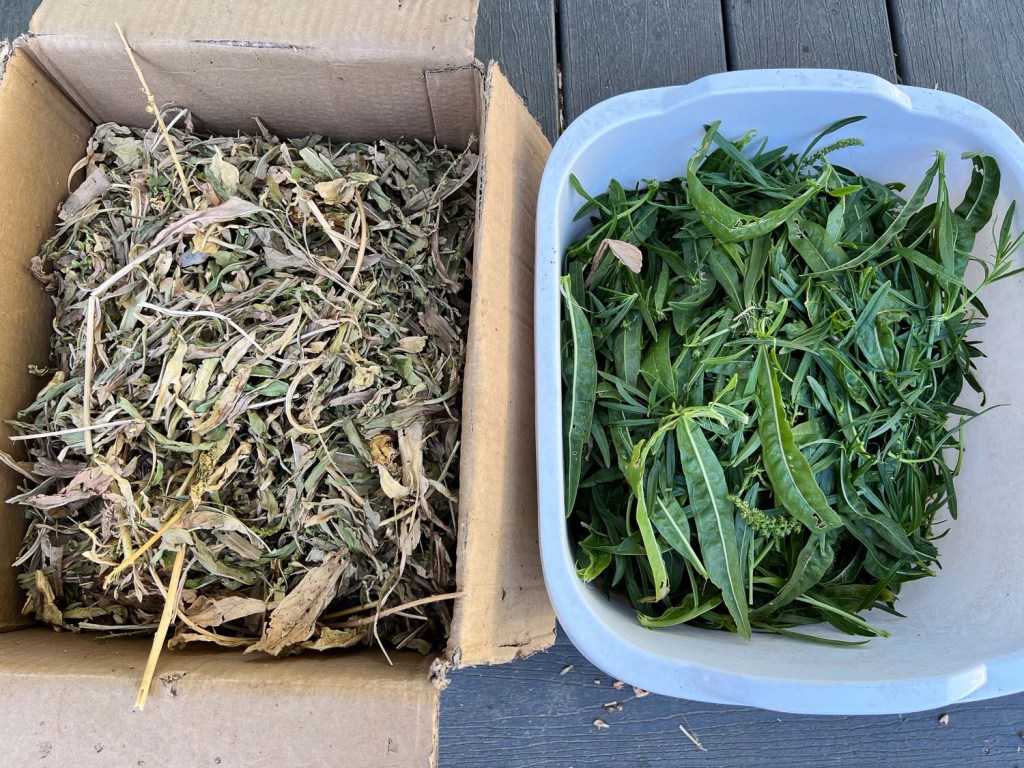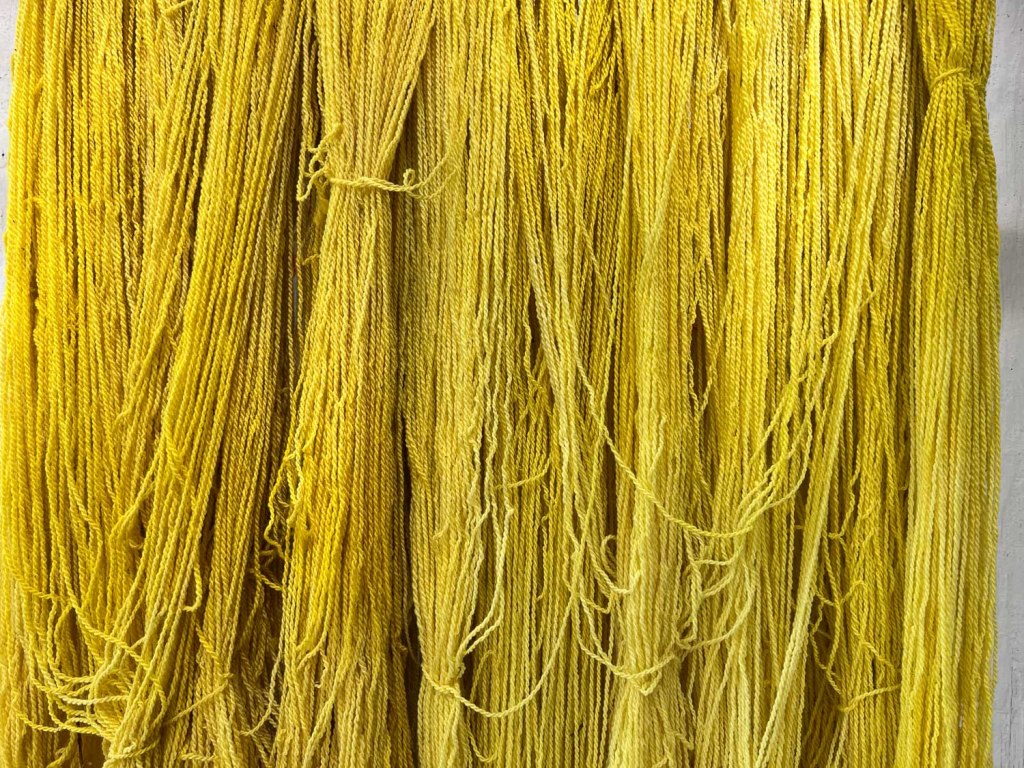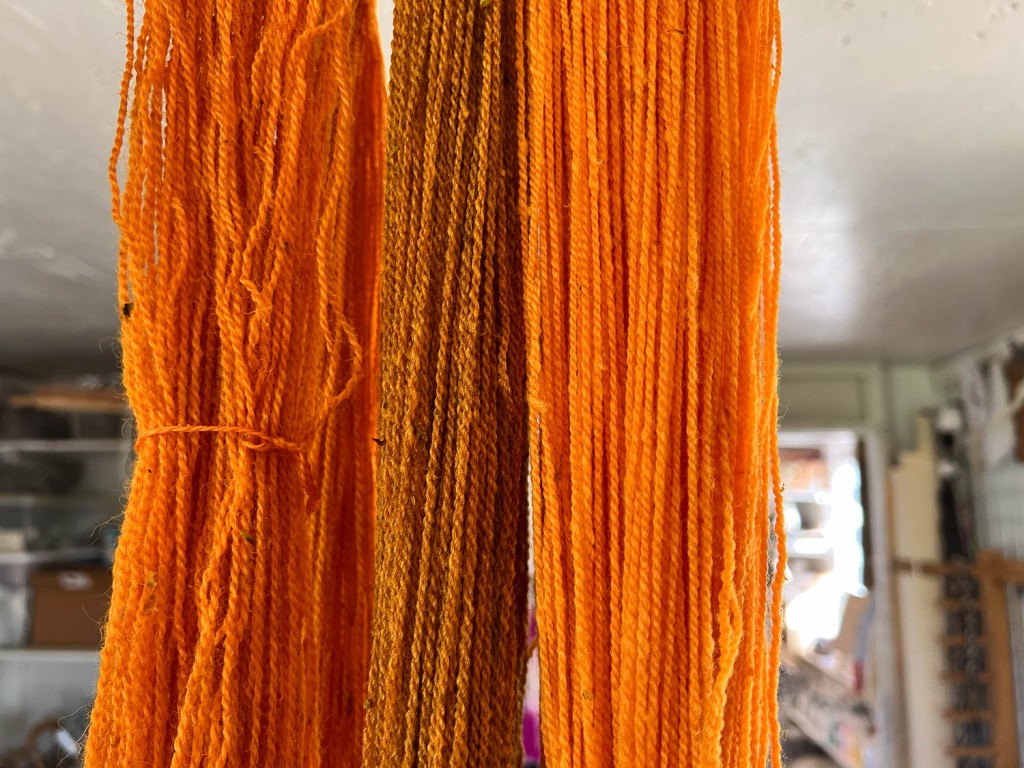Back to my regular blog posts. It’s time to pay attention to the dye garden.

The weld appeared on its own where I grew weld last year. No work on my part except to clear out the old and dried out plants from last year. I didn’t pay any attention to the weld bed until the plants started to dry out. That happens after it flowers and produces seeds. I’ve never paid much attention to the specifics of growing weld (it is so easy!) and was thinking that it was all annual growth. I just looked up “growing weld” and read that it is a biennial. How did I not know that? I think I’ve had first and second year plants in the same bed and wasn’t paying attention. All I know is that it makes a great dye.

As the plants dry out the leaves fall off the stems. I pulled out some of the dead plants and then scooped up what leaves I could. I also harvested fresh leaves from stems I cut off green plants. I was thinking that the leaves make the best dye, but looking up weld again I realize that people use the stalks and flowers too. This experiment used just leaves.

Two dye pots ready to go. I had two batches of yarn, each 12 ounces So I weighed 12 ounces of fresh leaves and guessed at using 4 ounces of dry leaves. The yarn I usually dye is my Timm Ranch yarn since I have more of it than the Jacob yarn.

Here is the result. I can’t tell the difference between using dry and fresh leaves. That’s good to know. I need to get out there tomorrow and cut a lot of the stalks so I can put them in a safe place to finish drying before all the leaves fall off.

Putting these photos together reminded me that I had done some dyeing earlier in the year. I gathered what was left of the oxalis flowers just before I left for my Texas trip in early April and did a quick dyepot.

Here is the brilliant result, on white and gray yarn.
Next up may be madder. because I finally hacked away most of the tops of plants that have been growing for two or three years. That’s when the roots are ready for dying. I just have to dig them up and then chop them.
